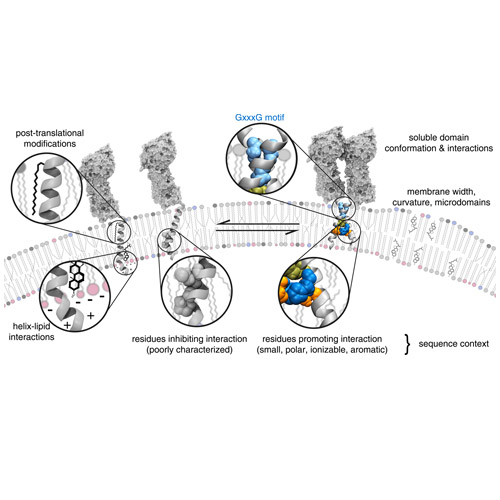Role of GxxxG Motifs in Transmembrane Domain Interactions
05-Aug-2015
Biochemistry, 54 (33), pp 5125–5135, DOI: 10.1021/acs.biochem.5b00495
Transmembrane (TM) helices of integral membrane proteins can facilitate strong and specific noncovalent protein–protein interactions. Mutagenesis and structural analyses have revealed numerous examples in which the interaction between TM helices of single-pass membrane proteins is dependent on a GxxxG or (small)xxx(small) motif. It is therefore tempting to use the presence of these simple motifs as an indicator of TM helix interactions. In this Current Topic review, we point out that these motifs are quite common, with more than 50% of single-pass TM domains containing a (small)xxx(small) motif. However, the actual interaction strength of motif-containing helices depends strongly on sequence context and membrane properties. In addition, recent studies have revealed several GxxxG-containing TM domains that interact via alternative interfaces involving hydrophobic, polar, aromatic, or even ionizable residues that do not form recognizable motifs. In multipass membrane proteins, GxxxG motifs can be important for protein folding, and not just oligomerization. Our current knowledge thus suggests that the presence of a GxxxG motif alone is a weak predictor of protein dimerization in the membrane.











